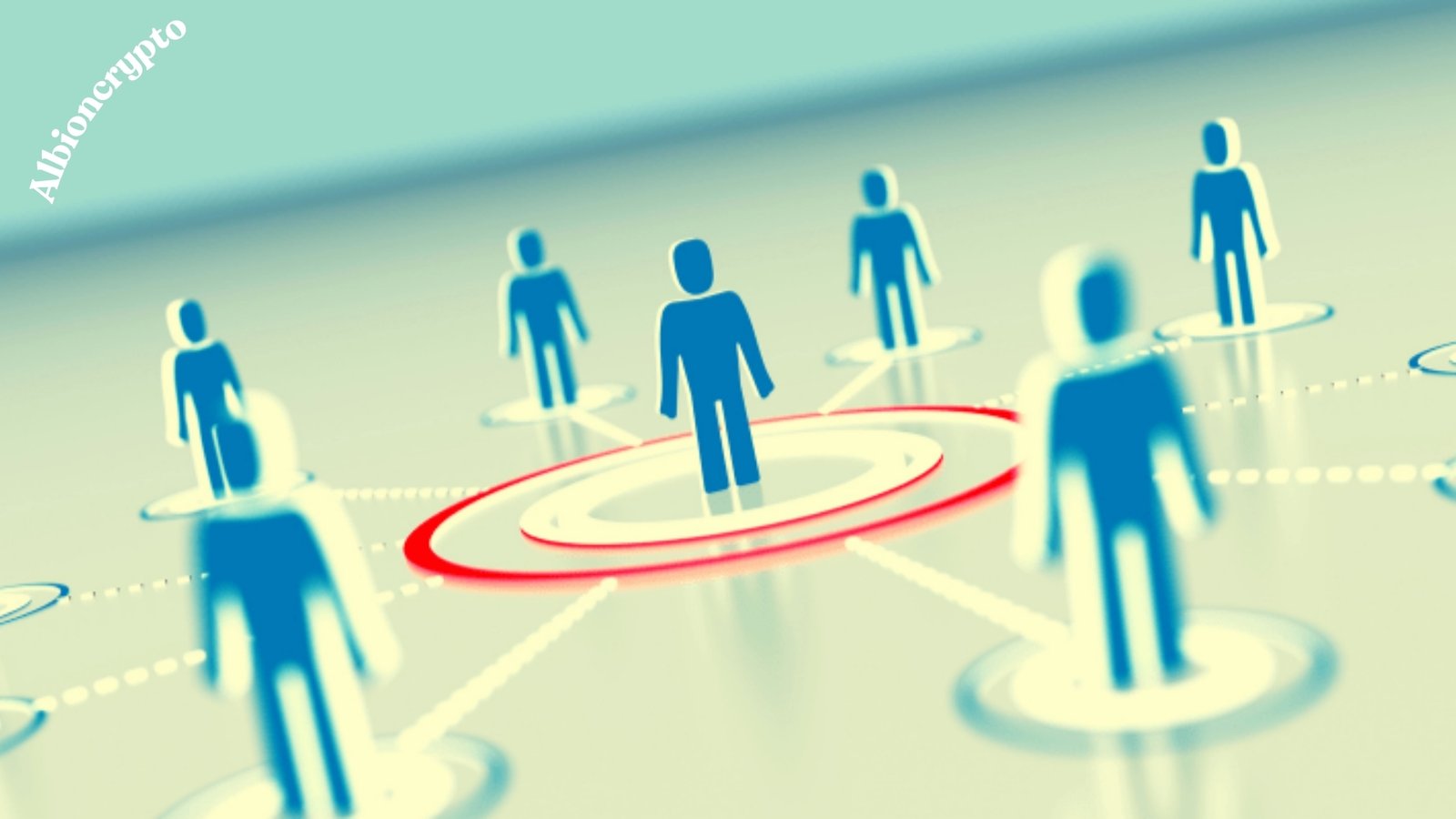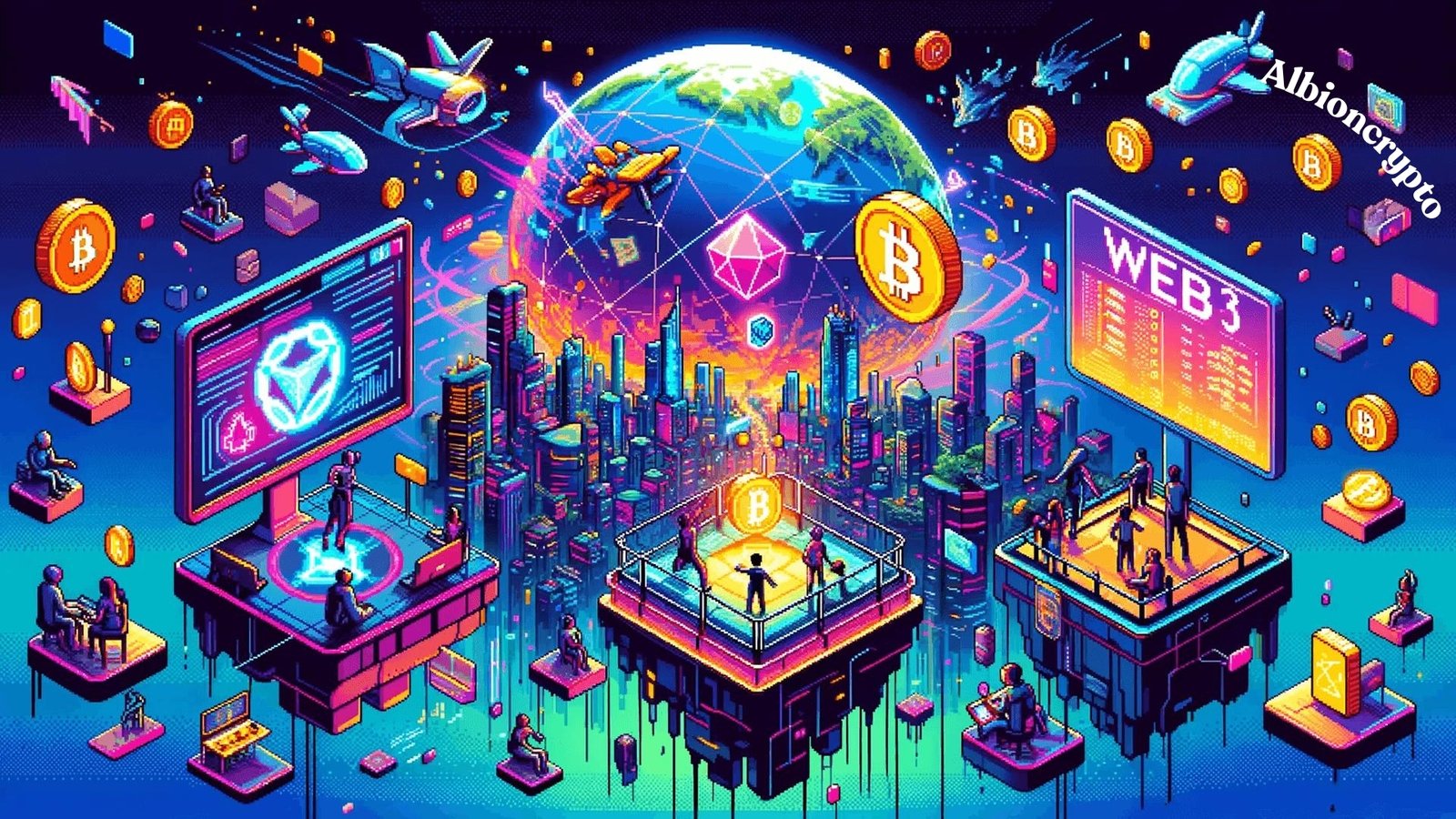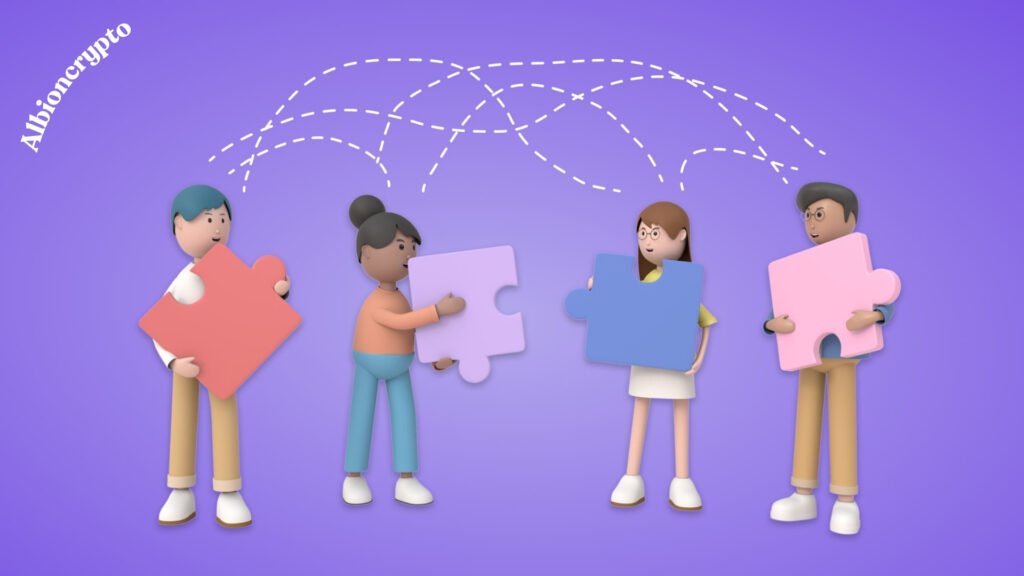Since its beginning, the Internet has experienced tremendous changes. The digital world has continuously evolved from Web 1.0’s static web pages to Web 2.0’s dynamic, user-generated content, all to become more interactive, accessible, and immersive. Another revolutionary change, Web3, is almost here. The idea of the Web3 community, which consists of people and organizations working together to shape the Internet of the future, is fundamental to this change. First, we will define the Web3 community and explain its significance.
Understanding Web3
You must know what Web3 is before you can join the Web3 community. The acronym “Web3,” which stands for the decentralized web, often envisions an open, trustless, and permissionless internet. In contrast to the centralized platforms that control the present web (Web 2.0), Web3 is based on decentralized technologies such as smart contracts, peer-to-peer networks, and blockchain.
Web 3 disperses data throughout a network of nodes rather than storing it on central servers. This decentralization makes the network and data more secure, transparent, and resistant to censorship because no one entity controls them. In addition, smart contracts—self-executing contracts with the terms put into code—allow users to connect directly with one another on Web3 without going through any middlemen.
Who Makes Up the Web3 Community?
Various people, groups, and initiatives are coming together to create the decentralized web as the Web3 community. This community includes developers, technologists, artists, activists, investors, and regular Internet users who are sincere about making the Internet a better place for everyone.
Developers and Technologists
Members of the Web3 community who are employed in the development field are indispensable. It is impossible to imagine Web3 existing without their work on decentralized protocols, applications, and tools. These professionals frequently possess expertise in blockchains, cryptography, and distributed systems. In addition to contributing to open-source projects and developing Web3 infrastructure, they are responsible for creating decentralized apps (dApps).
Several well-known Web3 projects have active and involved development communities. Some examples include Polkadot, Solana, and Ethereum. The developers are engaged in a wide range of activities, including creating new protocols for decentralized finance (DeFi) and non-fungible token (NFT) platforms and improving the security and scalability of blockchain networks.
Entrepreneurs and Innovators
Entrepreneurs within the Web3 community recognize the power of decentralized technology to revolutionize established sectors and establish novel forms of business organization. The innovative minds behind these firms are reimagining traditional industries like banking, gambling, and supply chain management by utilizing blockchain technology, smart contracts, and tokenization.
By eliminating intermediaries and conventional banks, decentralized financial infrastructure (DeFi) platforms like Uniswap and Aave have revolutionized the financial sector. Thanks to NFT markets like OpenSea and Rarible, new avenues for authors and artists to make money from their digital works have also opened up.
Artists and Creators
The proliferation of NFTs has made artists and makers an integral aspect of the Web3 ecosystem. Non-fungible tokens, or NFTs, are one-of-a-kind digital assets for ownership of a particular work of art, song, movie, or virtual good. The storage of NFTs on a blockchain guarantees their legitimacy and scarcity, distinguishing them from regular digital files.
Because of this, creators and artists may own their work and find new ways to make money; digital artists, musicians, and content creators can mint their work as NFTs and sell it directly to collectors, typically earning a commission on each resale. As a result, many new NFT works by artists like Beeple, Pak, and Grimes have been getting a lot of attention, sparking a creative surge in the digital arts community.
Investors and Speculators
Many people in the Web3 community are interested in investing or speculating because they see financial opportunities in the decentralized network. These entities put their money into NFTs, DeFi tokens, and cryptocurrencies with the expectation of profiting from the expansion of the Web3 ecosystem.
Individuals can trade digital assets on decentralized exchanges and platforms like Binance and Coinbase. At the same time, venture capital firms like Paradigm and Andreessen Horowitz (a16z) have established specific funds to invest in Web3 initiatives. Many think this infusion of money is essential to driving innovation and adoption, but others worry that the speculative character of the investments can cause market bubbles.
Activists and Advocates
Activists and advocates are vital to the Web3 movement by fighting for digital rights, privacy, and decentralization. These groups and individuals hope that Web3 can usher in a more egalitarian internet where users are no longer subject to censorship or surveillance and can freely choose what information they share online.
Organizations such as the Web3 Foundation and the Electronic Frontier Foundation (EFF) advocate for user rights protection and the widespread usage of decentralized technologies. To further educate the public on the merits of decentralization and the perils of centralized control, Web3 advocates frequently participate in public outreach and education initiatives.
The Role of DAOs in the Web3 Community
In the Web3 community, the advent of Decentralized Autonomous Organizations (DAOs) is a trend that is both ground-breaking and important. The members of distributed autonomous organizations (DAOs) are responsible for managing the organization through intelligent contracts. DAOs operate without a central authority. Tokens are frequently utilized by members of a decentralized autonomous organization (DAO) to cast votes on significant subject matters.
Decentralized autonomous organizations (DAOs) represent a novel style of government that is democratic, transparent, and decentralized. They have many possible applications, including managing decentralized communities and organizations and financing new operations and projects. MakerDAO, which is in charge of the DAI stablecoin, and ConstitutionDAO, which acquired a rare copy of the United States Constitution by raising millions of dollars through auction, are two examples of well-known decentralized autonomous organizations (DAOs).
Because they enable decentralized governance, decentralized autonomous organizations (DAOs) make it possible for communities to take control of the resources they share and to make decisions in a manner that is more inclusive and participatory through the use of these organizations. This aligns with the overall goals of the Web3 group, which are to create an internet that is more equitable and accessible to more people.
Challenges Facing the Web3 Community
Despite Web3’s promise and excitement, the community must overcome several obstacles to guarantee the decentralized web’s long-term success.
Scalability and Performance
Scalability is a major technical hurdle for Web3. Slow transaction speeds and excessive fees have been issues for many blockchain networks, Ethereum included, particularly during times of intense demand. The billions of users’ reliance on Web 2.0 platforms has raised questions over Web3’s scalability.
In response, developers are experimenting with novel consensus mechanisms (like proof-of-stake) and layer 2 scaling (such as sidechains and rollups) to make blockchain networks more efficient and scalable. Since these solutions are currently in development, deploying them completely will take some time.
User Experience
For Web3 to achieve general popularity, it must be simple to use and readily available. Many of the applications available on Web3 are too sophisticated for the typical user to comprehend and utilize. It can be challenging to acquire the knowledge necessary to understand the intricacies of decentralized finance protocols, private keys, and wallet management.
One of the Web3 group’s primary objectives is to improve the user experience (UX). This project includes enhancing teaching materials, simplifying the onboarding procedure, and developing more user-friendly interfaces. As Web3 applications continue to improve their user experience, more individuals will be able to participate in the decentralized web.
Regulatory Uncertainty
The community is experiencing difficulties due to the ever-changing regulatory environment for Web3. Regulation of cryptocurrencies, decentralized finance, and non-fungible tokens is a contentious issue, and various governments are adopting multiple approaches. Whereas some countries have enthusiastically embraced these inventions, others have taken a strict stance against them or outright prohibited them.
To ensure the continued success and viability of the Web3 ecosystem, it is necessary to comprehend and adhere to each regulation. The community must collaborate with legislators and regulators to support acceptable policies that protect consumers without stifling innovation.
The Future of the Web3 Community
An impending digital revolution puts the Web3 community in the vanguard of a movement. That might drastically alter our social and online interactions. With its ongoing growth and development, the community will be essential in determining how the decentralized web will be shaped.
New decentralized applications and platforms will emerge in the following years, blockchain technology will continue to improve, and Web3 principles will become more integrated into people’s daily lives. A decentralized, open, and equitable internet is within reach. As more individuals become involved with Web3 and help shape its future.
Conclusion
Finally, the Web3 movement is a worldwide effort to reimagine. The Internet gives people more excellent agency over their data. It’s not simply a collection of investors and programmers. The Web3 community is launching a new digital age, embracing decentralization, transparency, and user control. This period will be characterized by unprecedented personal agency and power. Anyone may become a part of the Web3 community and help shape its future, whether developers, entrepreneurs, artists, or just old internet users.
[sp_easyaccordion id=”3381″]


